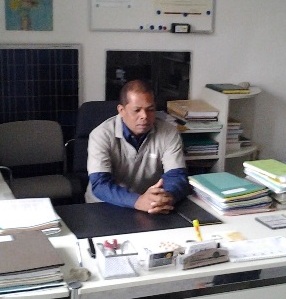The Analysis of Children Creativity Development in Paud Darul Fathonah Medan Marelan Sub-District
Abstract
This study aims to: (1) Analyze children's creativity development programs; (2) Analyzing children's creativity in learning planning; (3) Analyzing children's creativity in the learning process; and (4) Analyzing the description of children's creativity based on the results of the evaluation of learning. This research was conducted at PAUD Darul Fathonah Medan Marelan District. The subjects in this study were the principal, teachers and children in PAUD (Early Childhood Education) Darul Fathonah. The data collection in this study through observation, interviews and documentation. While the data analysis uses the Miles and Huberman model, namely data reduction, data presentation and conclusion drawing. The results showed that: (1) The development of children's creativity is carried out through creativity development programs in the form of extracurricular activities, peak theme activities, performing arts, out bonding, learning activities outside the classroom, competitions between Kindergarten (TK)/PAUD and tourist visits. This development program is made by the principal and teachers as well as support from parents and students who aim to develop children's creativity; (2) Teachers use learning methods and make RPPH that refers to semester programs, weekly programs and daily programs, structuring materials and play tools that will be used in creativity development activities that are adapted to the growth and development of children and children's learning needs; (3) Teachers and children are directly involved in learning which is supported by the use of media and Educational Game Tools (to make it easier for teachers to convey learning and make it easier for children to accept learning and provide motivation to children so that children become more enthusiastic in learning activities; and (4) Evaluation of learning is done by way of conversation, observation, anecdotes, and work. Based on the results of observations the evaluation of the child is still in the range of BB and MB grades because it is still in the learning process in the odd semester and the child still needs help and motivation from the teacher.
Keywords
Full Text:
PDFReferences
Munandar, Utami. 2009. Pegembangan Kreativitas Anak Berbakat. Jkarta: Rineka Cipta.
Mursid. 2017. Pengembangan Pembelajaran PAUD.Bandung: PT. Remaja Rosdakarya.
Priyanto, Aris. 2014. Pengembangan Kreativitas Pada Anak Usia Dini Melalui Aktivitas Bermain. COPE. 18(2): 41-47.
Santrock, Jhon W. 2011. Psikologi Pendidikan, Edisi Kedua. Jakarta: Kencana.
Sit, Masganti, dkk. 2016. Pengembangan Kreativitas Anak Usia Dini. Medan: Perdana Publishing.
Susanto, Ahmad. 2011. Perkembangan Anak Usia Dini. Jakarta: Kencana.
Yanuarti, F. 2014. Rahasia Otak & Kecerdasan Anak. Yogyakarta: Teranova Books.
DOI: https://doi.org/10.33258/birle.v3i1.795
Article Metrics
Abstract view : 169 timesPDF - 111 times
Refbacks
- There are currently no refbacks.

This work is licensed under a Creative Commons Attribution-ShareAlike 4.0 International License.

This work is licensed under a Creative Commons Attribution-ShareAlike 4.0 International License

_.gif)




















_.gif)



